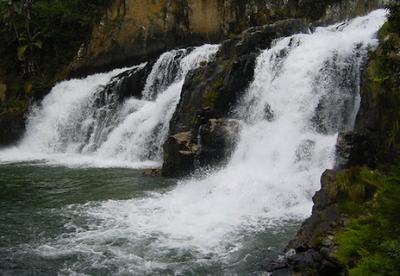Mutare, Zimbabwe:
For decades, the eastern highlands of Zimbabwe have been dotted with thatched grass huts in which farmers and their families reside.
These homes used to descend into darkness with setting of the sun, but increasingly access to electricity is enabling them to light up when the evening arrives, and the area’s population is steadily but surely growing. The increasing presence of micro hydropower has attracted growing numbers of people to the Honde Valley in Mutasa district hoping for a better life.
Improving access
According to the international development organisation Practical Action, lack of access to modern energy services remains a major obstacle to the delivery of services such as education and health in most developing countries.
In sub-Saharan Africa as a whole, only 30% of households have access to electricity; in rural areas this drops to below 15%, a reality which can contribute to the cycle of poverty.
As Practical Action explained to Think Africa Press, “sparsely populated rural areas are out of reach of electricity and it is technically difficult and economically costly to extend the national grid electricity to serve them”.
In Zimbabwe, for example, the Zimbabwe Power Company’s five power stations are not generating enough electricity for the whole country. And even though additional power is imported from the Democratic Republic of Congo, Mozambique, and South Africa, supply remains insufficient.
This is where micro hydropower comes in. Micro hydropower is the small-scale harnessing of energy from falling water such as steep mountain rivers. Power stations convert the energy from flowing water into electricity, providing poor rural communities with relatively affordable, easy-to-maintain, and long-term sources of power.
Getting going
Until recently, there has been little investment in micro hydropower stations by either the private sector or the Zimbabwean government. The 1962 Claremont Hydropower Project in Nyanga district was one of the earliest hydro plants to be developed in Zimbabwe but it was not until 35 years later that the second scheme was initiated. In 1997, an independent public-private partnership built a hydropower station in Rusitu Valley in the Chimanimani district and connected it up to the national grid. The 750 kilowatt project has since been selling power to the Zimbabwean Electricity Supply Authority.
More recently, however, the likes of local firm Nyangani Renewable Energy and Practical Action have been leading a new enthusiasm for micro hydropower.
Hydropower provides renewable, indigenous, non-polluting energy for homes, hospitals, and schools. It can increase agricultural productivity and boost industries such as agro-processing, crucial for increasing incomes and food security. In Zimbabwe’s eastern highlands, hydropower has brought electricity to a number of new environments.
Last year, Nyangani Renewable Energy built a hydropower station for $3 million. It now produces 1.1 megawatts of power and is now benefiting more than 45,000 people as well as rural businesses, clinics, and households in Zindi, Mapokana and Sagambe villages.
A second one is currently being built. Ian McKersie, Nyangani Renewable Energy’s managing director speaking to Think Africa Press explained: “We are expecting to complete this one in August this year. Upon completion, the power plant will generate 2.7 megawatts, enough power for the whole of Honde Valley.”
Explaining the funding situation, McKersie said: “Since the government has no financial resources to fund such projects, we had to use our own resources…though we are looking for other investors for our $50 million project.”
That $50 million project is the company’s next endeavour – a new station on the Pungwe river. McKersie explained: “The next project, Pungwe B, would generate up to 50 megawatts, and this will be enough to provide electricity to the whole of Manicaland province.” Once completed, it could benefit more than 1.5 million people.
Last year, Practical Action also constructed a station in the Mutare district at Chipendeke along the Chitora River, which is now supplying energy to more than 400 homes as well as the local clinic and school.
Electric energy
This new access to electricity can have huge benefits. Farmers can store products using refrigeration, for example, while schoolchildren are able to study in the evenings. Healthcare services have also been significantly boosted. William Chanakira, an employee at Chipendeke Clinic, explained: “Our clinic is now able to treat people at night and store medicines. The biggest problem we used to face was women who gave birth at night. They had to bring their own candles and or paraffin lamps”.
“We now have electricity in our homes, clinics and schools”, Naison Mutasa, a local resident proclaimed. “This has improved our quality of life. We are really happy about this new development.”
There are hopes too that these successes can be replicated in the likes of Malawi and Mozambique, and Practical Action has embarked on a five-year project funded by the European Commission which “seeks to improve energy access through community managed decentralised micro hydro systems focused on poor marginalised rural communities in fragile mountainous regions of Malawi, Mozambique and Zimbabwe”.
Andrew Mambondiyani
ThinkAfricaPress.com


